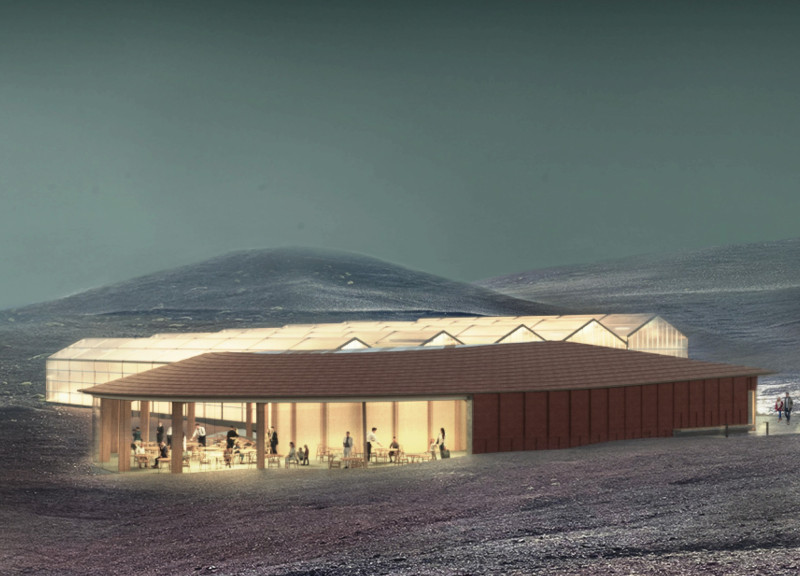5 key facts about this project
The overall architecture exemplifies a harmonious dialogue between contemporary design and traditional influences. This interplay is articulated through the careful selection of materials, which include locally sourced stone, sustainable timber, and expansive glass elements. The use of stone provides a stable base that connects the building to the landscape, while timber accents contribute warmth and tactile quality to the façade. Large glass panels facilitate a seamless transition between interior spaces and the surrounding environment, allowing natural light to flood the interiors and creating a sense of openness.
As one navigates through the project, distinct areas unfold, each thoughtfully designed to accommodate specific activities. The entry sequence is carefully choreographed; visitors are welcomed into a foyer that establishes the project’s character. Here, the architectural details such as the selection of light fixtures and the smooth flow of spaces create an inviting atmosphere.
The project excels in its layout, which promotes both functionality and a sense of community. Multi-purpose rooms are strategically placed to serve various activities, while corridors and communal areas are designed to facilitate movement and interaction among users. This functionality is enhanced through the adaptation of spaces that can be flexibly used for events or gatherings, highlighting the project’s commitment to adaptability and user-centered design.
One of the unique aspects of this architectural endeavor is its engagement with sustainable practices. The incorporation of green roofs, rainwater harvesting systems, and energy-efficient materials reflects a growing trend in architecture to address environmental concerns. These features not only demonstrate an awareness of ecological responsibilities but also enhance the livability of the space.
The project’s design also draws on local architectural traditions, subtly integrating familiar elements into its modernist approach. The rooflines and façade detailing echo nearby historic buildings, creating a continuous sense of place. This responsiveness to context reinforces the idea that contemporary architecture can be respectful of its surroundings while still being innovative.
Attention to detail is evident throughout the project. Elements such as the choice of paint colors, flooring materials, and landscaping have been meticulously curated to enhance the overall aesthetic while providing a cohesive experience. The integration of features such as seating nooks and landscaped courtyards further enriches the spatial quality and invites users to engage with the space more intimately.
Thus, as one delves into the intricacies of the architectural plans and sections, there is much to appreciate regarding the design intentions and outcomes of this project. The thoughtful composition and seamless integration of elements underscore a commitment to functional beauty and sustainability within the framework of modern architecture. Those interested in examining the full breadth of design ideas and architectural details are encouraged to explore the comprehensive project presentation. It serves as a rich resource for insights into advanced architectural techniques and design philosophies that underpin this notable work.


























